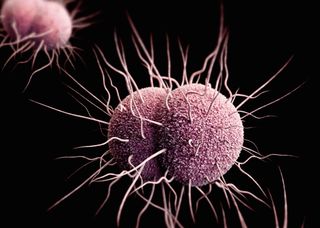
UK Man with 'Worst Ever' Drug-Resistant Gonorrhea Is Now Cured

The U.K. man who caught the "worst ever" case of antibiotic-resistant gonorrhea has been cured, according to news reports.
The man was "very lucky" that his treatment worked, sexual-health experts told the BBC today (April 20).
The man's infection was resistant to the two antibiotics recommended as the first-choice treatment for gonorrhea, called azithromycin and ceftriaxone. This was the first report in the world of a case of gonorrhea that was found to be resistant to both of these antibiotics, according to Public Health England (PHE), the U.K. health agency that investigated the man's case. However, two similar cases have since been reported in Australia.
The U.K. man acquired the infection from a sexual encounter with a woman in Southeast Asia, the BBC reported. He was treated with an antibiotic called ertapenem, which was administered intravenously for three days, according to the PHE. This treatment apparently did the trick.
"We are pleased to report that the case of multi-drug resistant gonorrhea has been successfully treated," Dr. Gwenda Hughes, head of the Sexually Transmitted Infection (STI) Section at the PHE, said in a statement.
The U.K. case and the new cases in Australia "serve as a timely reminder that we expect to see further cases of multi-drug-resistant gonorrhea in the future," Hughes said. "We urge the public to avoid getting or passing on gonorrhea by using condoms consistently and correctly with all new and casual partners. If you think you have been at risk, you should seek an STI [test] at a sexual health clinic."
Original article on Live Science.
Sign up for the Live Science daily newsletter now
Get the world’s most fascinating discoveries delivered straight to your inbox.

Rachael is a Live Science contributor, and was a former channel editor and senior writer for Live Science between 2010 and 2022. She has a master's degree in journalism from New York University's Science, Health and Environmental Reporting Program. She also holds a B.S. in molecular biology and an M.S. in biology from the University of California, San Diego. Her work has appeared in Scienceline, The Washington Post and Scientific American.
Most Popular



